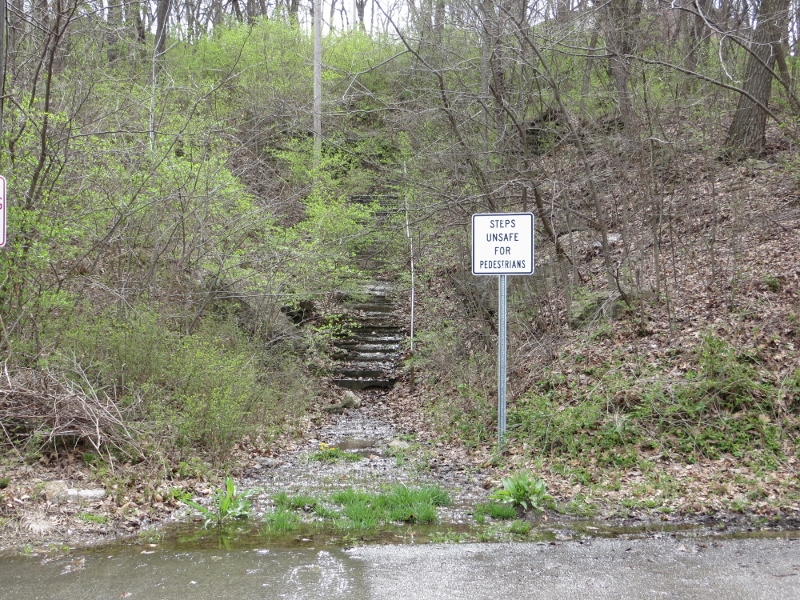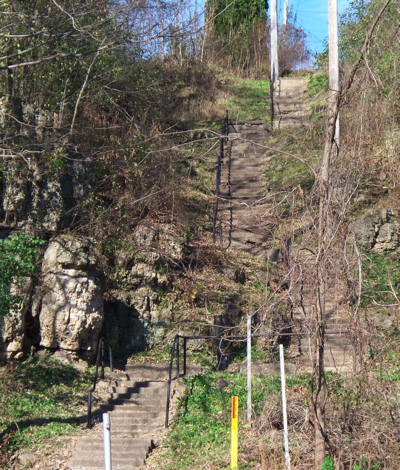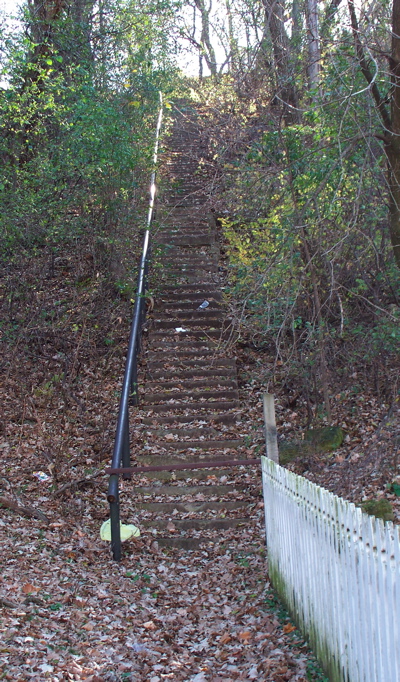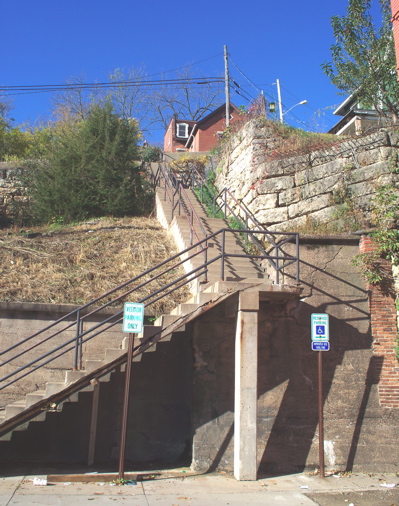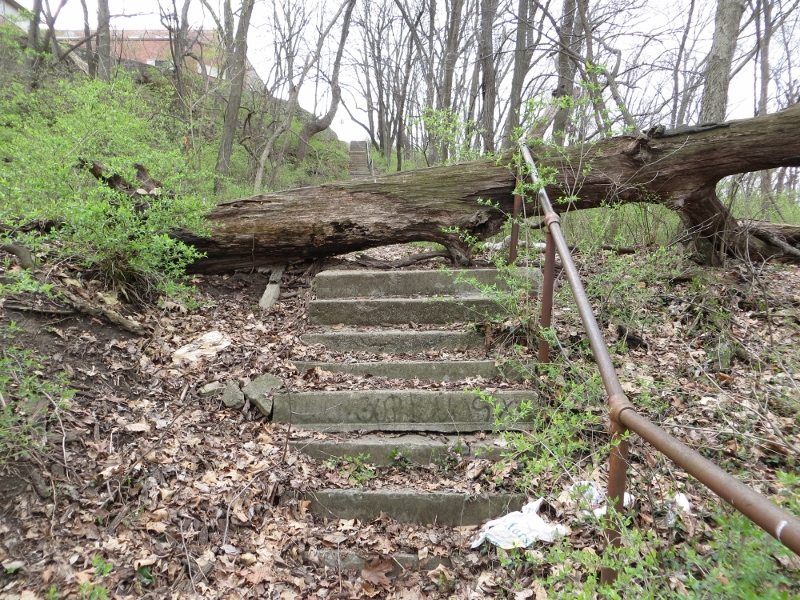Encyclopedia Dubuque
"Encyclopedia Dubuque is the online authority for all things Dubuque, written by the people who know the city best.”
Marshall Cohen—researcher and producer, CNN
Affiliated with the Local History Network of the State Historical Society of Iowa, and the Iowa Museum Association.
PUBLIC STAIRS
PUBLIC STAIRS. In the early years of the twentieth century, Dubuque had twenty-five separate sets of public stairways of which the Madison Street steps (pictured) were considered the most elaborate.
Most of the steps were constructed between 1900 and 1916. Among the many locations of steps in the city, the Fourth Ward received much of the work. Steps were built from Bluff to Montrose, Montrose to Fairview, Montrose to Cornell, along Dell Street, W 17th to Catherne, and Dorgan to N. Main. City steps linking Bluff, Grove Terrace and Highland Place replaced the ELEVENTH STREET ELEVATOR. Steps off West Third connected that street to Fenelon Place. Steps off West 5th provided access to Raymond Place on the south and West 7th on the north. Steps were constructed fro West 7th to Hill Street and on both sides of Eighth Street above the intersection of Hill and University. Foy Street was linked to Clarke Drive and steps linked two sections of Angella Street. (1)
Stairs clinging precariously to the bluff at EAGLE POINT ran from Rhomberg Avenue to the Shiras Memorial in the park. Constructed between 1910 and 1920, the stairs were demolished during the widening of Rhomberg Avenue in the 1930s and the expansion of the EAGLE POINT LIME WORKS.
In August, 1942 the city council informally discussed the request of the Dubuque Park Board for the city to take responsibility for the maintenance of public stairways on West 15th Street and Madison Street. Both stairways served residential areas and were not connected with parks. The Madison Street steps had received repairs from the Park Board, but additional work was needed. The council delayed any action until a later date. (2)
Remnants of stairs can be seen along Dodge Street and West Locust although use of the steps is generally no longer permitted. In 1971 an estimate placed a price of $150,000 to bring all the steps up to their original standards. (3)
The interest in restoring the Seminary Hill (Madison Street) steps reached a peak in 1975. The city council directed its staff in that year to include repairs in the following year's street construction program. The estimated cost was $75,000. A straight flight of wooden steps had connected Madison Street with the top of the Madison Park bluff beginning around the turn of the century. By 1918 the stairs had become dangerous and an appropriation of $2,100 had been obtained to replace them. There had been repairs in 1942, as noted previously, but nothing significant had been planned. As walking diminished with the use of automobiles, the stairs deteriorated and were finally closed to the public in 1956. (4)
Interest in restoring the steps came from many quarters. The DUBUQUE COUNTY HISTORICAL SOCIETY considered nominating them for the NATIONAL REGISTER OF HISTORIC PLACES. "Beautify Dubuque Week" in May, 1975 led Assistant City Planer Jim Gibbs to discuss restoration with Mayor C. Robert JUSTMANN. It was perhaps the visit of Governor Robert Ray to the city that gave the important pressure to move ahead. Ray was said to have commented that it was a "crime" that the city had allowed the steps to decay. (5)
---
Source:
1. Buckley, John. "Steps," Telegraph-Herald, July 8, 1971, p. 11
2. "Open Forum to Follow War Talk," Telegraph-Herald, August 4, 1942, p. 2
3. Ibid.
4. Fyten David, "Push is One to Restore Seminary Hill's Steps," Telegraph-Herald, June 23, 1975, p. 10
5. Ibid.



